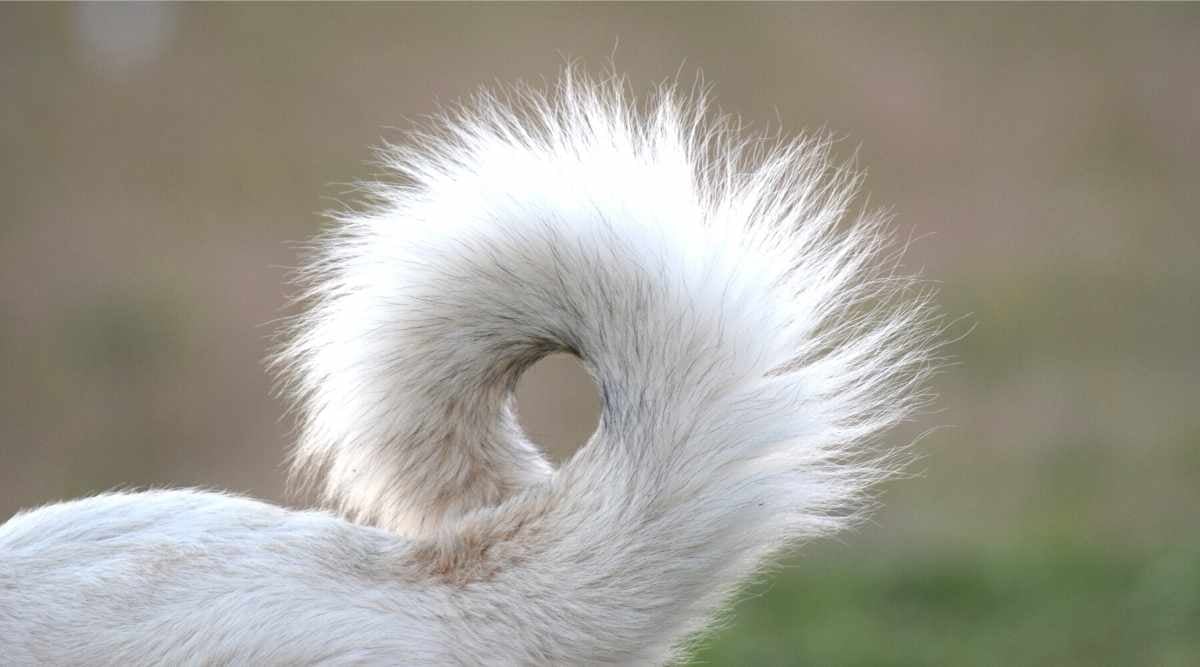Types Of Pitbull Dog Breeds: Differences, Appearances, & Traits
When you purchase through links on our site, we may earn a commission. Here’s how it works.
Many people in the U.S. commonly use the name “Pit Bull” or “Pitbull” to refer to several dog breeds or mixed breed dogs with similar physical traits, such as a broad head and muscular body. A Pitbull is not one specific breed; it is a general label given to a few canine breeds with similar origins, appearance, and temperaments. Despite their vicious reputation and their increased numbers in shelters, they are anything but vicious if they are raised properly. Get to know the different types of Pitbulls, and more about this breed group.
Table of Contents
Defining Pitbulls
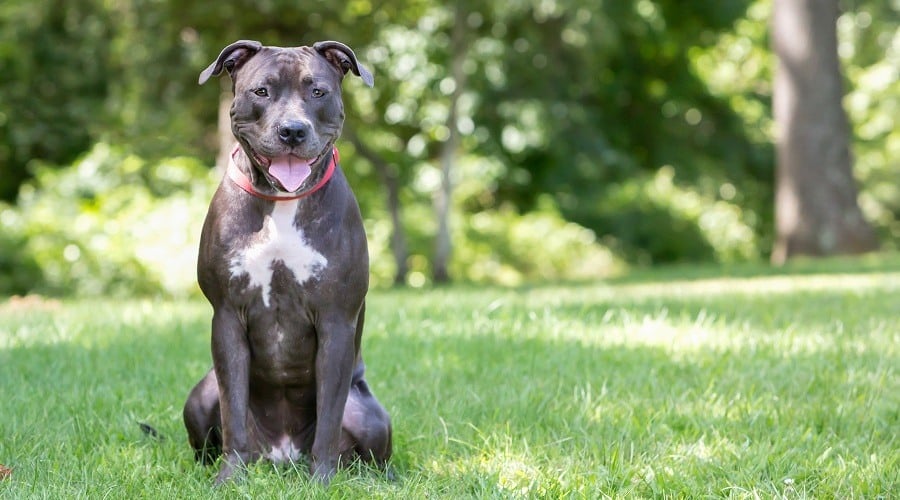
Officially, a Pitbull is not actually a dog breed in itself. It’s an umbrella term used for dogs who descend from Bulldogs and Terriers. In the United States, there are four official breeds of Pitbull dogs. However, often, other similar-looking breeds and mixes are chucked under the Pitbull label. The American Pitbull Terrier is the main dog breed that is associated with the term Pitbull. Often when someone is talking about a Pitbull dog, they will more than likely be referring to an American Pitbull Terrier.
In the U.K., most people use the term “Pit Bull” as an abbreviation of one breed, the American Pitbull Terrier. However, in the U.S., there’s a lot of disagreement about what a true Pitbull is because there’s no recognized breed simply called “Pit Bull.”
Breeding History
Terriers, known for their agility and feistiness, and Bulldogs, known for their brute strength, were bred together to create the perfect fighting dog. This breed was meant to be tenacious and powerful. Pitbull-type dogs first originated in Great Britain, where bear and bull-baiting were popular but cruel blood sports.
In 1835, when the Cruelty to Animals Act was enacted, this sport was thankfully stopped. Unfortunately, the spectators and participants quickly turned their attention to dogfighting events. They were cheaper to organize and easier to drive underground so to hide the events from law enforcement. Not only did these events involve gambling, but they enabled owners to showcase their dog’s gameness and strength. The last dog standing, or fighting, won their owner the prize and reputation of breeding the best dogs around.
After the Civil War, British immigrants began to arrive in America with their fighting dogs in tow. It was here that American dogfighters wanted to create an even bigger and more powerful fighting dog breed. This was where the American Pitbull Terrier, American Staffordshire Bull Terrier, and American Bully were born.
Pitbulls vs Bully Breeds
The term “bully breed” refers to a large group of various breeds of dogs that hail from the same root breed. Dogs that belong to a bully breed are all derived from one particular type of dog known as the Molosser. The Molosser is an Ancient Greek breed characterized by a short muzzle, large bones, a large frame, and pendant-shaped ears.
Originally, Molossers were bred with a range of other dogs that resulted in today’s characteristics in the various bully-type breeds. These dogs were bred as guardians of both property and livestock. Some owners would also use their dogs in sports like bull-baiting, which many believe is how the term “bully breed” came about. Unfortunately, many owners have recognized their potential as fighting dogs and, in turn, have created an unfortunate alternate use of the term “bully breed.”
“Pit Bull” or ‘Pitbull” is often used to categorize many breeds under the bully breed label.
Many bully breeds are unknown to general dog lovers, which is perhaps one reason why so many dogs are mischaracterized as Pit Bulls. While these breeds all share a common ancestry and have similar features such as the flatter, shorter snout, distinguishing between different bully breeds is important.
Without separating one bully breed from another, it is easy for Pit Bulls to be pinned as the “breed that bit that kid.” That is not to say that bully breeds, in general, are bad dogs, they just happen to be most frequently selected by bad owners.
Reputation & Mischaracterization Of Pitbulls
Dog fighting is where the Pitbull type dog’s vicious reputation started. However, on an important note, all fighting dogs were obviously trained to be extremely vicious toward other dogs. But, as soon as a human entered the ring, they were trained not to attack. This is where their love of humans also stems from. Any dog that displayed human aggression was culled.
Characteristics Of Pitbulls
Many Pitbull-type dogs have similar physical and behavioral characteristics.
Appearances
All Pitbull-type dogs share their athletic and muscular look. Some may look more athletic than others. Some dogs are squatter and wider, and some are taller and leaner. You can compare their heights and weights, according to their official breed standard, at the end of this section in the table. All Pitbull-type dogs have a square-shaped head, a square fleshy nose, and big almond-shaped eyes.
All of their coats are short and smooth. While they shed frequently, they all require minimum bathing and brushing. Their tails are long and straight, and their ears tend to be rose-shaped, except, of course, when they have been cropped. Many owners still prefer this and adopt the look.
Coat Coloring
Pitbull-type dogs come in pretty much any animal color you can think of, except for merle. While there are merle-colored Pitbull type dogs out there, the merle color gene is not naturally found in these breeds. This means another breed with this color gene has been chucked into the mix at some point. Therefore a merle Pitbull-type dog is not 100% of Pitbull origin. This color is not accepted by any breed club, so this is something to think about before paying the extra price tag for this color.
Temperaments
All four dogs tend to share the same temperament, adoring humans and craving their company. They also love to get involved in family fun, whether that be a game of football or a snooze on the sofa. They are very sweet and sensitive souls and are particularly fond of children. This is how they earned their nickname, the nanny dog.
If not socialized adequately as a pup, then they can display fear-aggression against other dogs. But this is the same for a Chihuahua all the way up to a Great Dane. If they are socialized well, they tend to be sociable with other dogs. Their eagerness to please their masters also means that they are a dream to train. If you are consistent in your training, you will find an obedient Pittie sidekick on your hands. Let’s take a closer look at each Pitbull type dog and their specs.
Meet 6 Different Types Of Pitbulls
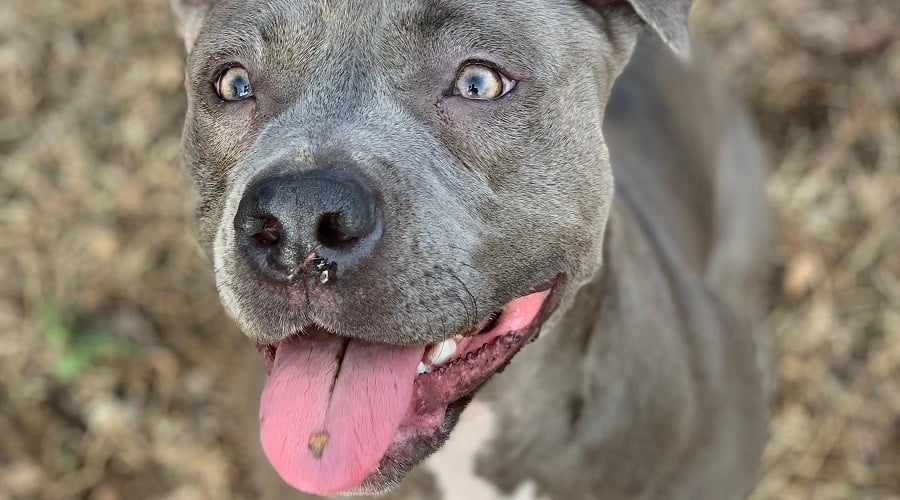
The following six dog breeds are the most widely accepted Pitbull-type dogs. However, just to make it slightly more confusing, some breeds are only accepted by certain Kennel Clubs. And some are accepted by all Kennel Clubs. Many people argue that the American Pitbull Terrier and the American Staffordshire Terrier are the only two breeds that are true Pitbull-type dogs. Others say that the American Pitbull Terrier and the American Staffordshire Terrier are, in fact, the same breed of dog.
So, depending on who you ask, you may well get a different answer, but the information in this article is based on the most common belief or what is commonly accepted by professionals in the canine world.
- Height17-21 Inches
- Height17-19 Inches
- Weight30-65 Pounds
- Weight40-70 Pounds
1. American Pitbull Terrier
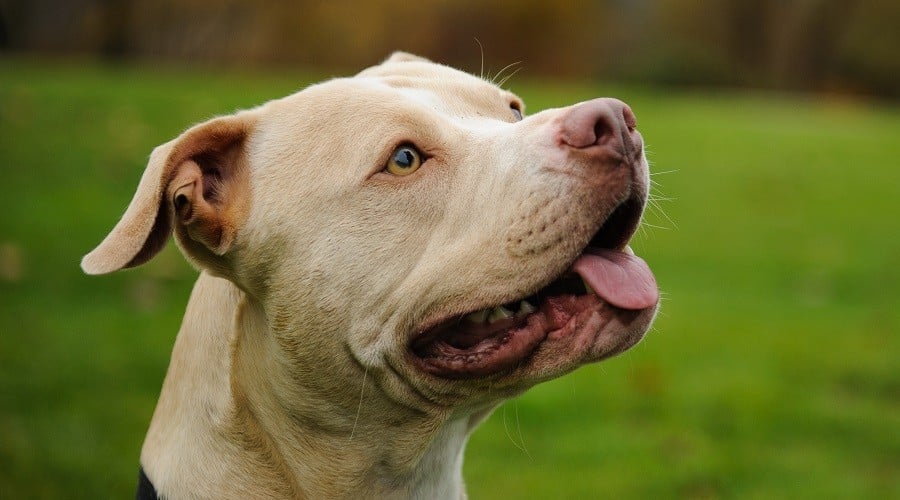
As previously mentioned, this is the most commonly spoken of Pitbull. It’s the one that many think is the original, or the only, Pitbull type dog. This dog is not recognized as a breed by the American Kennel Club (AKC). He is, however, recognized by the United Kennel Club (UKC). It is stated that this breed has maintained its breed type for well over 150 years. Because of this, he is considered to be a purebred dog by the UKC.
Upon arriving in America, ranchers and farmers couldn’t help but notice his athleticism, skill, and obedience. These dogs quickly took employment on many farms and ranches as herders and as hunters. Once his hard day’s work was completed, he became the family companion for his master and his family. The American Pitbull Terrier is one of the tallest of the four breeds. Being taller means that he is a lot more athletic in appearance. For further information on his appearance, the UKC breed standard of the American Pitbull Terrier can be found here.
APBTs come in a variety of different colors, including brindle, black, white, brown, or a mix of all of them. Along with the label comes additional health conditions and often higher price tags. The American Pitbull Terrier is also often compared to the American Bulldog or compared to the Staffordshire Terrier, even though they are different breeds. They are also sometimes confused with the Dogo Argentino because they look similar.
2. Red Nose American Pitbull Terrier
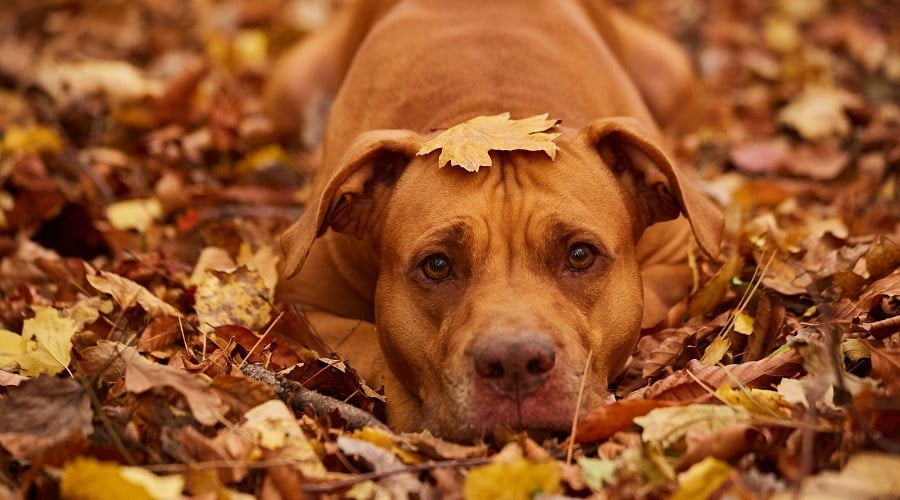
A red nose American Pitbull Terrier will have exactly that: a red nose. With the red nose comes copper or earthy brown coat colors, such as brown, red, fawn, or chestnut. His lips, eyes, and toenails are also red in color. While they are certainly rarer than the typical American Pitbull Terrier, they are exactly the same in every other way. They do have a few additional health concerns linked to the recessive gene, which are discussed further below.
Because he is rarer in color, many unethical breeders breed genetically close red noses in order to increase the chances of their puppies also having red noses, thus generating more money. This breeding practice is frowned upon because it leads to genetic defects and poor health.
If you are seeking a red nose American Pitbull Terrier be sure to work with an ethical breeder who can prove family lineage and the health of the pups. Just because they often sell for a few thousand dollars does not mean that they have been bred correctly or well looked after.
3. Blue Nose American Pitbull Terrier
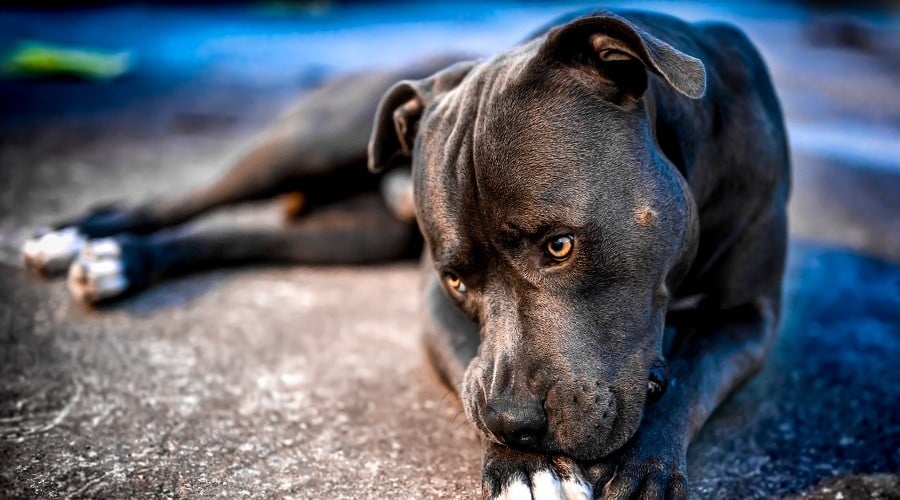
A blue nose American Pitbull Terrier is the same as the red nose American Pitbull Terrier, except he has a blue nose. His nose, lips, eyes, and toenails will be blue or grey in color, and he will be easily identifiable from a young age compared to the traditional black nose. Similar to other breeds, having a rarer coloring can come with a higher price tag, so be sure to work with a reputable breeder.
In addition to the inbreeding concerns, given their smaller gene pool, the different color nose (including the red) is a result of low melanin levels. This is the pigment responsible for coloring in any living system, including us humans.
A deficiency in melanin, which is a result of the recessive color gene, also creates additional health issues and diseases. It has been linked to skin allergies (which Pitbull-type dogs are already prone to), heart diseases, eye conditions, an increase in the chance of cancer, and decreased immune system functionality.
4. American Staffordshire Terrier

The American Staffordshire Terrier, commonly shortened to the name ‘AmStaff,’ is recognized by the AKC and not the UKC. He has long been one of America’s favorite dogs. Not only has he been the sidekick of three American Presidents, but he was also America’s most decorated war dog.
The American Staffordshire has long been a family companion. His sweet nature has won the hearts of millions, not just in America but across the world. Despite his formidable exterior, he is known to be one of the sweetest dogs around, who not only loves his family very much but also everybody with whom he comes into contact. For this reason, he does not make the greatest of natural guard dogs. The AmStaff is sometimes confused for the American Pitbull Terrier.
5. Staffordshire Bull Terrier
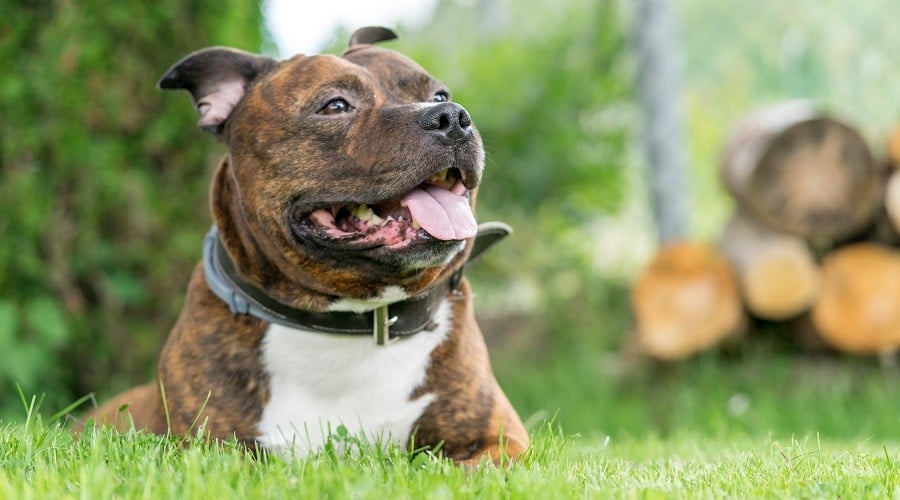
The Staffordshire Bull Terrier is thought to be the most popular dog in Great Britain, yet being the 80th most popular breed in America, his popularity has not quite caught on over here. He is recognized by all major Kennel Clubs, including the AKC and UKC. Staffies are described as clever, brave, and tenacious. He’s an affectionate dog who has a real love for life.
He is the smallest of Pitbull type dogs too, sometimes by 7 inches in height. The biggest Staffordshire Bull Terriers are around the same weight as the smaller dogs amongst the other dogs. Being smaller, the Staffordshire Bull Terrier is a great choice for those who love Pitbull-type dogs but have less room for the stockier versions. Further detailed information on his breed standard can be found here.
6. American Bully
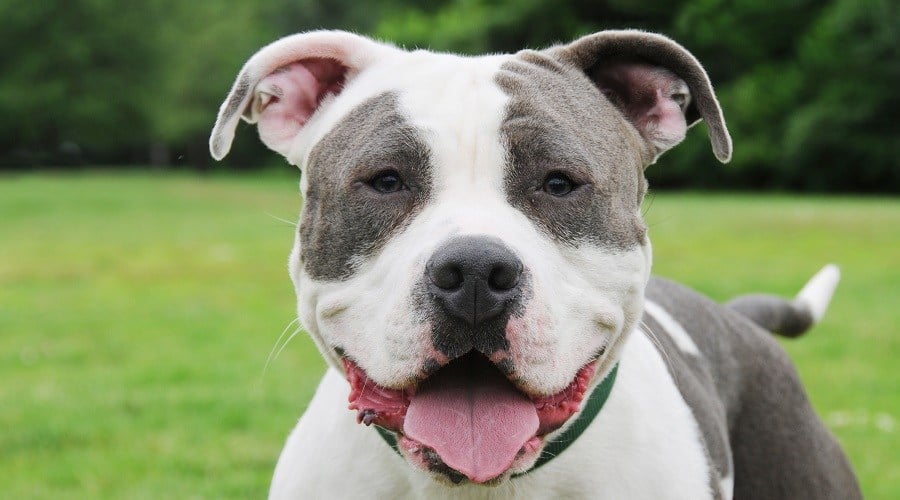
The American Bully is a descendant of the American Pitbull Terrier. Over time, he has become so distinct in appearance that he is now considered to be his own breed altogether. He is a relatively new breed that was developed in the 1980s and only recognized by the UKC in 2013. He is shorter than the American Pitbull Terrier and much wider than any of the breeds here in this article. These pups can be so wide that it often looks like their muscles have muscles. The American Bully is a larger Pitbull-type dog and has specific nutrition requirements.
He is recognized by the UKC and not the AKC. The American Bully Kennel Club also recognizes him, and they recognize him in four distinct sizes: Pocket, Standard, Classic, and XL (see sizes in the table below). The Classic American Bully is much narrower and less muscular than the other three sizes. Many people also believe that Micro and XXL American Bullies exist and sell them as such, but these sizes are not officially recognized.
The most expensive American Bully, named White Rhino, was purchased for $250,000, and this exorbitant price tag is very rare. But American Bullies can be by far the most expensive dogs in America. The biggest American Bully on record is Hulk, who weighs a humongous 174 pounds. The American Bully is also often compared to the American Bulldog, English Bulldog, and (English) Bull Terrier.
Best Pet Insurance For Pit Bulls
The estimated lifespan of a Pitbull is between 8 to 16 years. Fortunately, if you sign up for pet insurance before your Pit Bull is diagnosed with a health condition or suffers from an accident (post-waiting periods), it can help you cover the expenses.
Choosing the best pet insurance for your Pit Bull is a personal decision, but we recommend selecting a company based on coverage, customer service, reputation, claim repayment timeline, price, and available plan customizations.
Our experts have selected and evaluated the best pet insurance companies in our pet insurance reviews. Our article includes our top picks and reviews of the most popular pet insurance companies in the marketplace. Use our quote form below to see what pet insurance would cost you.
Breed Specific Legislation
Pitbull-type dogs are all subject to Breed Specific Legislation (BSL). This varies from country to country and state to state, all of which can, for example, enforce increased liability insurance all the way up to outright banning. Much research suggests that BSL is not effective and, as such, should be withdrawn.
Not only do owners have to deal with unfair and restrictive laws, increases in insurance costs, and being excluded from home rentals, but they also have to deal with day-to-day prejudices from society thanks to a lack of education and the sensationalist media. This is despite controlled studies suggesting that Pitbull-type dogs are not disproportionately dangerous.
While this subject needs an article in its own right, it is something that you need to take into consideration if you are thinking about welcoming a Pitbull-type dog into your home. It’s something that you must research thoroughly. For further information regarding local laws, this page lists the states that prohibit the regulation of certain dog breeds by local government.
Our Personal Experience With Pitbulls
I have raised Pitbulls and Pitbull mixes for over twenty years. In my experience, these dogs have been very intelligent, loyal, and very sweet. I have encountered many positives with having them. They have made excellent guard dogs, as well as gentle companions for my children. As a woman, having a breed that is perceived as tough has helped me feel safe and protected when walking and hiking alone with my pup.
When raising my Pitbull-type dogs, I always used caution and only positive reinforcement training. I have made sure my dogs are well-behaved around other dogs and people, but I have encountered many circumstances when the Pitbull breed, or even perception, has been a problem. Finding housing, even when buying a home, is one example, as many municipalities or Homeowner’s associations have restrictions on Pitbull-type and Bully breeds. Another obstacle has been finding pet sitters and vet care, as not everyone is comfortable with these breeds.
All that aside, my Pitbull-type pups have been amazing companions, and I would not trade them for anything. With the proper care, training, and a loving home, they are pure sweethearts who have never bitten a person, another dog, or another pet.
– Danielle DeGroot, Pitbull Owner, Canine Journal Writing & Research
Pitbull Myths vs Pitbull Reality
There are many different misconceptions about the breed, so I compiled a list of the most commonly discussed Pitbull myths versus the realities below.
Myth: All Pitbull-Type Dogs Are Inherently Dangerous
Reality: No, not all Pitbull type dogs are dangerous. The American Temperament Test Society (ATTS) puts dog breeds through a series of tests and challenges to test their temperament. Out of 35,686 dogs tested in the latest results (December 2017), the average pass rate was 83.7%.
The American Pitbull Terrier passed at 87.4%, the American Staffordshire Terrier passed at 85.5%, and the Staffordshire Bull Terrier passed at 90.9%. The American Bully temperament test results are not available (which does not mean they failed). However, the three Pitbull-type dogs passed well above the average score, so this alone supports the case that Pitbull dogs are not inherently dangerous.
Myth: Pitbulls Are Inherently Aggressive
Reality: Pitbulls are not inherently aggressive. This is a huge misconception. For starters, all dogs are unique, and dogs of any breed can be aggressive. Pitbulls are not born aggressive or mean. They can be some of the most loving, smart dogs around. Unfortunately, some people breed and raise these dogs to be aggressive, but the breed is not natural that way.
Research continues to show that dog breeds alone are not a significant factor in aggressive behavior. In fact, in many owner surveys, smaller dogs, like the Chihuahua, are reported as being more aggressive. Training, care, and environment have a lot more to do with it than breed.
Myth: Pitbull-Type Dogs Have “Lockjaw,” Making Them More Dangerous
Reality: No, they do not have a ‘lockjaw.’ There is no such thing as a lockjaw. All canine skulls are of the same design and have the same functions, and there is no locking function. Terriers are known for their tenacity and gameness, which is why when they get a grip on their prey, they keep hold of it. This is the very reason why Terriers were originally selected to be bred with Bulldogs.
Myth: You Should Not Rescue A Pitbull Dog Because They Were Abused
Reality: Not all Pitbulls have been mistreated, and not all mistreated dogs are dangerous. There are simply so many Pitbulls that they make up the highest proportion of dogs in rescue shelters. Consequently, they are the population that is euthanized the most, too.
Equally, not all mistreated dogs are dangerous. Being a Pitbull-type dog rescue mom whose dog was badly beaten and given drugs during the first year of his life, he was later used as the ‘tester dog’ in rescue kennels to profile other dogs and their sociability, simply because he is so friendly. Pitbulls are the same as any other dog, and there will always be a few dangerous pups. This entirely comes down to poor socialization as a puppy, but they are few and far between.
Learn More About Dog Adoption
Learn more about dog adoption in our guide. We also share our personal experiences with adopting a rescue dog and what to do if a rescue pup isn’t the right fit.
Myth: Pitbulls Don’t Make Good Family Pets
Reality: Pitbulls and Pitbull-type breeds are some of the friendliest and sweetest dogs you will meet. In the right home, with proper training and care, they are gentle and loyal. Many of the Pitbull type breeds and mixes are highly intelligent and respond well to training. They require early socialization and consistent training.
You may want to consider an online training program like Doggy Dan, a training collar, or you may prefer a local trainer who can work with you and your pup in person. Our experts have tips for helping you find the right trainer.
Myth: Pitbull-Type Dogs All Smile
Reality: While science suggests that dogs cannot smile, if you ask any Pitbull-type mom or dad, you will get a resounding yes from them. Our in-house food tester, Daisy, a 13-year-old Pitbull lab mix, sure seems to smile all the time, as seen in the picture below.

Myth: Pitbulls Have The Strongest Bite Of Any Canine Breed
Reality: Pitbulls do not have the strongest bite force of any breed. In fact, bite damage has more to do with the individual dog than with the breed. However, just to be clear, Rottweilers, Akitas, English Mastiffs, Tosa Inu, Cane Corso, and Kangal all have a stronger bite force than the Bully breeds.
The Pit Bull is said to exert their bite at around 235 pounds per square inch, which is like many other breeds. According to a list of breeds with the strongest bite force, the Pit Bull is not even in the top 12 list.
Did You Know The Kangal Has The Strongest Bite Force?
The Kangal measures 743 pounds per square inch of bite force. Even with this figure in mind, does this mean that the Kangal is a dangerous breed? Not necessarily. It means that if a Kangal were to bite someone or something, it could be capable of exerting 743 pounds per square inch of bite force. It does not mean that this dog will bite or use that much force with a bite.
Pitbulls Puppies Are Cute!
Without a doubt, Pitbull puppies are adorable. To prove my point, check out this montage of funny and cute Pitbull puppy moments.
It’s Not Okay To Minimize Pitbull Bite Incidences
It’s important not to minimize Pitbull bite incidences, but it is crucial to draw attention to the fact that there are some mitigating circumstances in these dog bite statistics. The truth is that people do get bitten by Pitbulls, just as they get bitten by Huskies and German Shepherds. However, it is possible to become a proponent of Pitbulls while also respecting the incidences of Pitbull bites.
Encourage individuals with reservations about Pitbulls to understand that not all dogs within a certain classification are bred to fight and that upbringing and good breeding can result in a wide range of dispositions. Many people have experiences that have colored their opinion of one dog breed or another, but as a proponent for fair treatment of the Pitbull, it is important to make others aware of the fact that not all Pitbulls or Pitbull-type breeds are like “the one that bit that kid.”
Dog Liability Insurance May Save You Money And Your Dog’s Life
If you want to better understand how you might protect yourself and your Pit from potentially risky situations, we recommend you contact a dog liability insurance expert to gain some perspective on your options.
Keeping Your Pitbull Happy And Healthy
Keeping your Pitbull healthy is a lifelong commitment. They need top-quality food on a proper feeding schedule, regular exercise, and routine veterinary care. They also need daily one-on-one play sessions and interactive dog toys. Remember, a bored dog is a destructive dog. Along with that, be sure to invest in no-pull harnesses, appropriate-sized dog crates, and durable chew toys. Use our guide to find the best name for your newly adopted Pitbull.
Why Trust Canine Journal?
Emma is a dog owner with over 20 years of experience with canines. She has also worked as a professional dog walker and sitter for many years, caring for several dog breeds with different needs, including senior pups. Emma dedicates countless hours researching the latest pet care, health, food, and training developments to keep her two best buddies and other doggy clients as happy and healthy as possible.

